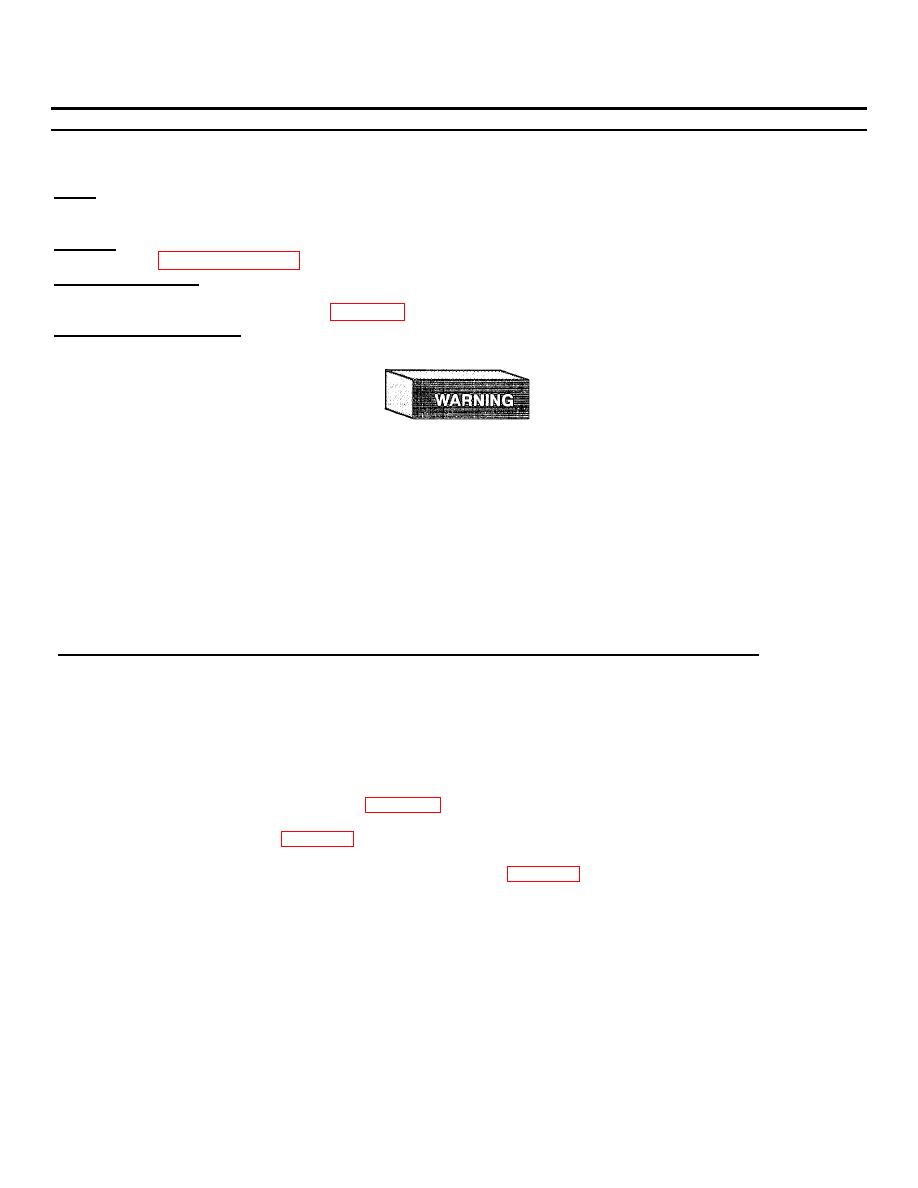
TM 9-4120-395-14&P
5-9. EVACUATING REFRIGERATION SYSTEM.
This task covers:
Service
INITIAL SETUP:
Tools:
Tool kit, service, refrigeration unit
Pump, vacuum
Materials:
Refrigerant-22 (Appendix F, Item 8)
Equipment Condition:
Power off at power source.
Both front door assemblies removed. See para 4-17.
General Safety Instructions:
HIGH VOLTAGE is used in the operation of this equipment. DEATH ON CONTACT
or severe injury may result if personnel fail to observe safety precautions. Do not
operate unit without panels and screens in place and tightly se- cured.
Death or serious injury may result if personnel fail to observe safety precautions.
Use great care to avoid contact with liquid refrigerant or refrigerant gas being
discharged under pressure. Sudden and irreversible tissue damage can result from
freezing. Wear thermal protective gloves and a face protector or goggles in any
situation where skin/eye contact is possible. Prevent contact of refrigerant gas with
flame or hot surfaces. Heat causes the refrigerant to break down and form carbonyl
chloride (phosgene), a highly poisonous and corrosive gas.
CAUTION
Do not evacuate a leaking system. The vacuum created can cause air, moisture, and dirt
to enter the system.
NOTE
The refrigeration system must be evacuated to remove all moisture before it is charged
with refrigerant-22. Check that system was leak tested and has NO LEAKS. If the
compressor was replaced as a result of a burn out, check that compressor burn out
procedures were followed. See para 5-20.
a.
Discharge system. See para 5-5.
b.
Check that new drier was installed. If not, install one per para 5-12.
c.
Remove yellow 3/8" hose from hose rack and connect to vacuum pump.
d.
Remove 1/4" yellow hose from hose rack and connect to refrigerant-22 cylinder positioned for dispensing
gas.
e.
Open refrigerant-22 cylinder and loosen 1/4" yellow hose at charge port and purge for 3-5 seconds, then
tighten.
f. Open vacuum/purge valve, compound gage valve, and pressure gage valve.
5-13

